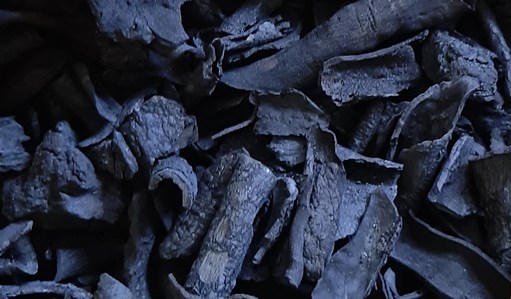From biomass to biochar – analysing the value for soil and fuel
Pyrolysis for biochar production is a key technology in the BIO4Africa project. Here, BIO4Africa partner Celignis takes a look at the properties of biochar and how to ensure the right fit for each application.

Biomass offers a rare opportunity to meet energy and material needs with a neutral carbon footprint. One route is to transform biomass through pyrolysis – a thermochemical modification process where biomass is broken down in an oxygen-free atmosphere into biochar, bio-oil and combustible gases.
Biochar is a carbon-rich material with 70-80% fixed carbon. The combustible gases are mainly used to fuel the pyrolysis process.
During pyrolysis, the release of volatile components from the biomass gives biochar a characteristic honeycomb structure with a relatively high surface area. This porous nature makes the biochar suitable for a range of applications – as a soil supplement for improving plant growth, as an adsorbent to decontaminate air and water and as a catalyst in biodiesel production
Biochar can also be used as a water filter for domestic use, a source of clean-burning bioenergy, an additive for upgrading biogas production, a
stabilizer in composting and a carbon sequestration instrument in the building sector. It can even be used in the production of parts for electrical devices.
Surface area and porosity
The surface area of biochar can vary significantly due to the many variables that impact porosity. These include the type of feedstock, the pre-treatment, process conditions, the presence of ash or condensates that clog the pores, and the activation method used to release the volatile components.Analyses of surface area and pore size distribution are necessary to establish the porosity of a biochar sample and its suitability for each application.
Soil amendment
Soil amendment with biochar has attracted attention for two main reasons. Firstly, biochar is an inert form of carbon that is highly resistant to microbial degradation. As a result, the carbon that was drawn from the atmosphere to grow the initial biomass feedstock becomes locked into biochar when added to the soil – a form of carbon sequestration.
Additionally, biochar can help improve soil fertility, enhancing plant growth and resilience. Complementary effects of the biochar include increased carbon stocks and nutrient availability, improving the growth conditions for arbuscular mycorrhizal fungi. Existing in symbiotic relationship with plant roots, the fungi support the plant’s nutrient uptake.
Thermal properties
As a fuel, biochar has several advantages over the original biomass. For example, the content of carbon and hydrogen is higher, while oxygen content is lower. This leads to an increased calorific value – in other words, the liberation of more heat on combustion. Due to the loss of highly volatile components during pyrolysis, biochar is also a much cleaner burning fuel. That means less smoke and a healthier indoor environment when used by rural households.
Interested in finding out more about how Celignis analyses biochar surface area, porosity and ultrastructure and evaluates biochar biomass and applications? Click here
This article has been adapted from an original article published by Celignis.